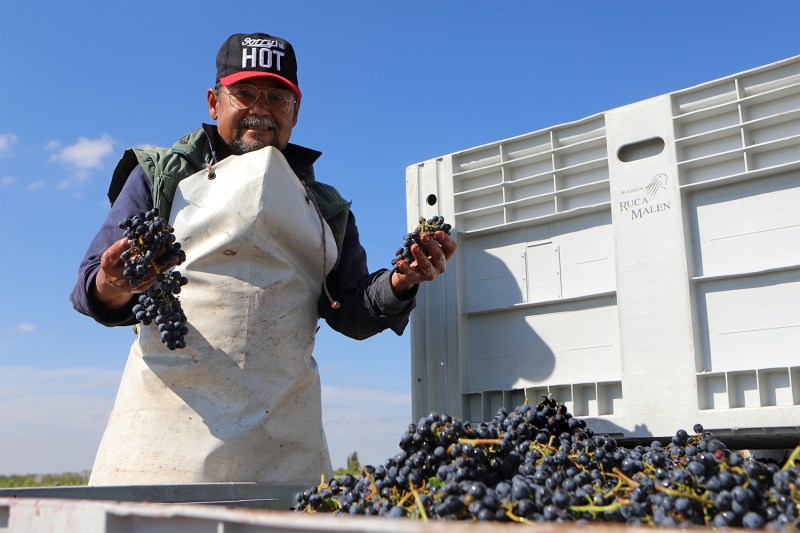Like pickleball and taxes, climate change comes for us all. In the wine world, that means growing fruit in warmer conditions and increasingly more often in a haze of wildfire smoke. A little smoke can impart some interesting characteristics in the fruit, but if there’s too much, the chemistry is thrown off and the resulting wine smells and tastes like ash.
Fortunately, winemakers are a creative lot. Up and down the West Coast — and beyond — producers are turning smoke-affected fruit and wines into everything from barbecue sauce to vermouth.
What is smoke taint?
When smoke levels get too high in the fruit and wines, the resulting liquid is often referred to as tainted. Smoke impact is the preferred term, but you’ll still hear people saying smoke taint. Regardless, this occurs when a threshold is breached (somewhat subjective from palate to palate but standards are being set in various wine-growing regions) and the smoky characteristics overwhelm the wine.
A big problem is that the fermentation process can exacerbate the smoke compounds already in the fruit. A little can lead to interesting wines with charred pepper and smoky elements. But if you stray over that line, even just a bit, the wine tastes like an ashtray or burnt meat. Often, these wines are treated to extra filtration, blended in with other wines to dampen the impact, or worse, poured down the drain.
The West Coast wildfire season of 2020 saw so much smoke impact that some producers turned fruit away. Some smaller labels skipped wine making that vintage altogether. But there are some uses for this kind of fruit.
The Durant project

In the Willamette Valley, Durant Vineyards is putting smoke-impacted wine to excellent use. While premium pinot noir will fetch a much better profit than barbecue sauce, owner Paul Durant says the decision to make the latter was actually quite easy.
“We have a lot of in-house culinary talent that was able to craft a barbecue sauce that is very unique and uniquely Durant,” he said. “The smoke impacts in the wine are not particularly overt. That being said, we play in the high-end wine space and we will put our brand at risk by selling a product that does not match our high standards and those of our customers as well.”
Durant hopes this is a one-off project, but climate change may have other ideas. “We have enough of the 2020 wine that we will be making barbecue sauce for quite some time,” he said. Some 5,000 bottles have been made, with a portion of the proceeds fittingly going toward the local fire department. The sauce shows warm notes of allspice and clove, along with black pepper and chili.
The food-friendliness of pinot noir made the transition to sauce all the easier. “We wanted it to complement not only brisket or ribs, but also dishes you wouldn’t ordinarily put a barbecue sauce on, such as salmon,” he explained.
Are there other ways to use these grapes?

Other wineries are getting in on the resourcefulness as well. Labels like Patty Green made a whiskey out of some impacted juice, while Kelley Fox made a vermouth. Some labels have used the fruit to make jam or vinegar, and we’ll likely only see more uses going forward. Of course, with high-end grapes like pinot noir, wine is the best option, as the fruit is of tremendous value, and a good bottle can fetch three figures. As Durant suggested, one of the best safety mechanisms going forward is having several varietals planted in different locations, so you don’t get burned if one lot chokes on smoke.
Some grapes can handle smoke better than others, too. Pinot noir is notoriously delicate, but other options, like cabernet sauvignon, boast thicker skins. That allows for added protection, especially as these wines tend to be bolder and heftier, meaning they can better cloak the smoke. But again, it doesn’t take a whole lot to affect a wine, red or white, and winemakers take quite a risk in putting such a wine on the market. This is a conversation that’s really only beginning in the industry.
More and more research on the subject is being conducted. In fact, a recent study found that a new kind of sulfur compound is most responsible for smoke impact in fruit and wines. This kind of research can help winemakers make decisions early on about sourcing and using fruit during smoky growing seasons.
These plan B projects are great, but real wine is clearly the objective. Check out our features on the best wines and sommelier-approved wines. And if you’re in the traveling mood, read our summer wine destinations piece.



